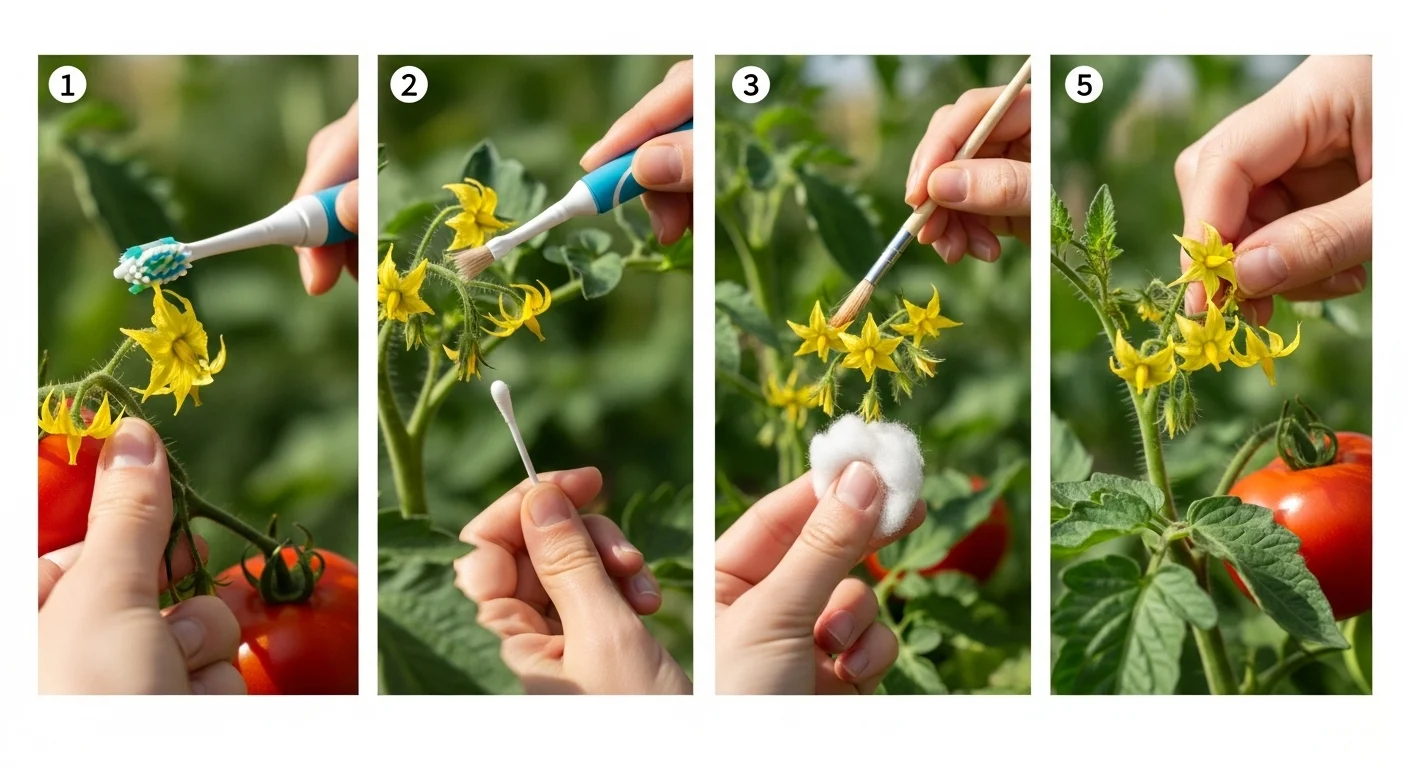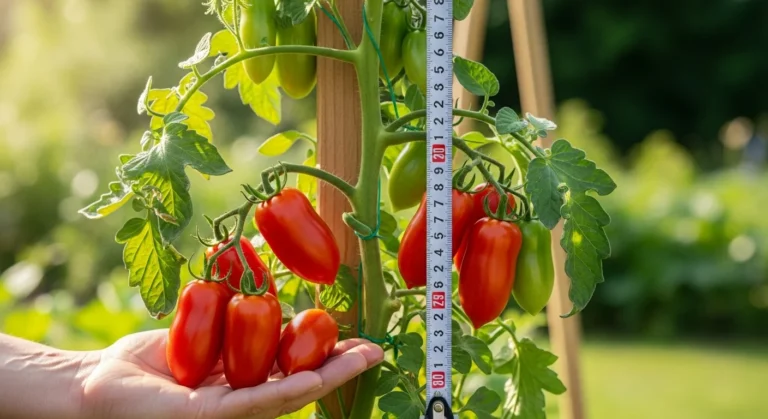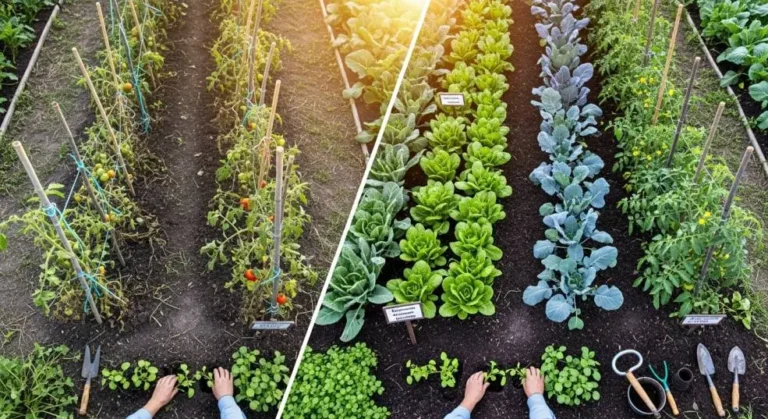What is going on, everyone! Welcome to another very exciting article about growing tomatoes, and specifically how to hand pollinate them using five different methods.
This topic comes up quite a bit when we’re growing tomatoes, especially when we’re growing them indoors, and we don’t have the help of pollinators like bees, moths, flies, ants—yes, even ants can pollinate your flowers!
But without having those available to us, how are we going to get fruit set? Today, we’re going to talk about the five different methods you can use to hand pollinate your tomatoes and have some pretty good success with them.
Why Would You Want to Hand Pollinate?
Hand pollination helps increase the number of tomatoes. Tomatoes are self-fruitful, meaning one flower has both male and female parts. Unlike zucchini, squash, or pumpkins, they don’t need to separate male and female flowers.
This is good for a few reasons. First, it makes cross-pollination rare. While it can happen if many pollinators visit nearby plants, it’s not common because each flower has all the necessary parts. This keeps the plants stable.
Second, having both parts in one flower helps with fertility. The plants don’t need much help to produce fruit. Even if you leave them alone, without any pollinators, they can still grow about 20 to 30 percent of their fruit. That’s impressive!
How Natural Pollination Works in Tomatoes
In tomatoes, the vibrations from bees—‘buzz pollination’—help release pollen to the stigma.
The flowers face downward, which helps them self-pollinate. Gravity and tiny vibrations move pollen from the male parts (anthers) to the female parts (stigma). This happens naturally over time.
While not highly successful, 20 to 30 percent fruit set is good. You don’t even need to touch the flowers.
In tomatoes, the vibrations from bees help release pollen to the stigma. Bees don’t aim to pollinate; they just want pollen. That’s why tomatoes often get less pollination. There isn’t much pollen available.
Bumblebees may visit tomatoes, but honeybees rarely do. Tomatoes have little pollen and no nectar, making them less attractive to pollinators.
You need some help to boost pollination. There are several ways to improve fruit set. Let’s explore these tips! They apply to both outdoor and indoor growing, so you can achieve more success.
Method #1: Paint Brush
You can hand pollinate flowers with a paint brush. It’s simple and works like a moth or butterfly’s tongue, which gathers nectar.
Just use the brush to reach between the flower petals and collect pollen from the anthers. Be careful not to cross-pollinate. Clean the brush with isopropyl alcohol before using it on different flower types. This will help prevent mixing pollen types.
Method #2: Q-Tip
Q-tips are great for pollination because they are fuzzy and hold a lot of pollen. You need to apply a bit more pressure with the Q-tip to gather the pollen.
Since you may only have one bloom, this will help transfer pollen to ensure the flower has enough to set fruit. Unlike humans, plants need multiple pollen grains on the stigma to produce fruit. This method increases the pollen count and helps create viable fruit.
Method #3: Your Finger
Next, let’s talk about your finger. There is a video about this called “Increase Your Tomatoes by 75% Using Your Finger.”
You can gently tap your plants with your finger. Pretend to be a bee buzzing against them. This helps the pollen fall onto the flowers. You’ll likely see more tomatoes by doing this.
Keep the tapping quick and gentle. Fast taps will spread more pollen without knocking flowers off. Just be careful not to be too abrupt.
Method #4: Electric Toothbrush
Now the next method is one that I don’t personally have here with me because I don’t personally use one, and that’s an electric toothbrush. This is fantastic for pollinating your vegetables because it vibrates at such a high frequency, like I was just stating with your finger, that it does actually a far better job at vibrating the pollen from the anthers onto the stigma.
Many greenhouse manuals recommend electric pollinators to increase tomato fruit set through targeted vibration
And this is something that we actually have seen come on to the forefront of hand pollination when it comes to greenhouse growing and things like that. They’ll actually create these little vibrating wands that they stick on—it’s got two little fingers that stick onto the flower and just sits on there really quick, vibrates, and they’re good.
They move from flower to flower, to increase the fruit set that they have. And this was all adapted from the electric toothbrush.
And so definitely by no means is this silly to go walking out in the garden with an electric toothbrush and vibrating the flowers of your tomato plants. It will really help and it definitely actually does work. I’ve just simply moved away from electric toothbrush because they’re very expensive, so all manual for me. But yeah, they do work.
Method #5: Music/Radio
Now, the final method of hand pollination doesn’t even require your hands at all. All you need to do is have a radio. But if you’re very good at playing an instrument—I’m not—you can also play that.
As we talked about in the very beginning, the micro vibrations are what knocks the pollen from the anthers onto the stigma, and those micro vibrations are found in music.
So if you play loud music in your garden, not only do those micro vibrations help the plants grow, but when flowering, it can also help to knock the pollen loose and help pollinate your tomatoes.
And so it’s another reason to get outside, be outside in your garden with not only your instruments or your radio, but just get out there and have fun!
Conclusion
Here are five ways to boost your fruit yields and succeed in the garden. I hope you give them a try! Let me know your thoughts in the comments.
If you enjoyed this article, please share it. It helps more people find this information.
I hope you learned something new. If you are interested to check out our some other articles for Tomato plants than do checkout these articles : 👇👇




Leave a Comment